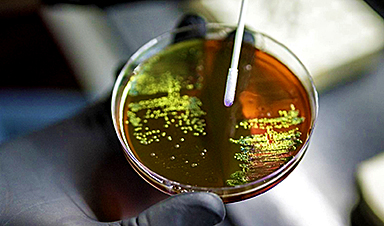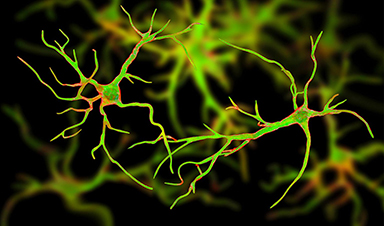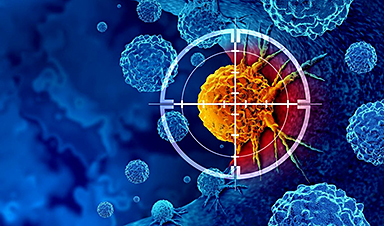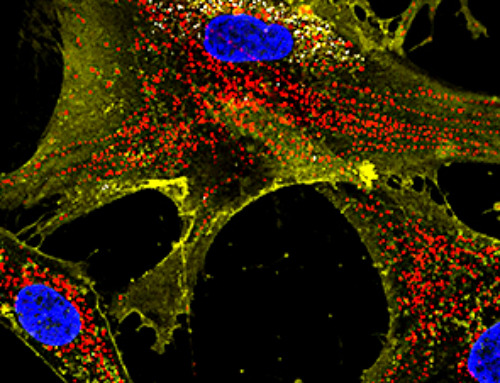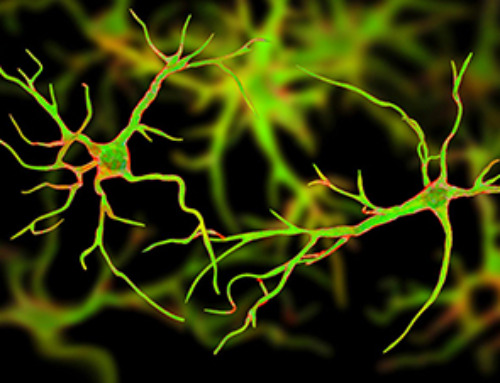Key facts
- Antimicrobial resistance (AMR) is one of the top global public health and development threats. It is estimated that bacterial AMR was directly responsible for 1.27 million global deaths in 2019 and contributed to 4.95 million deaths (1).
- The misuse and overuse of antimicrobials in humans, animals and plants are the main drivers in the development of drug-resistant pathogens.
- AMR affects countries in all regions and at all income levels. Its drivers and consequences are exacerbated by poverty and inequality, and low- and middle-income countries are most affected.
- AMR puts many of the gains of modern medicine at risk. It makes infections harder to treat and makes other medical procedures and treatments – such as surgery, caesarean sections and cancer chemotherapy – much riskier.
- The world faces an antibiotics pipeline and access crisis. There is an inadequate research and development pipeline in the face of rising levels of resistance, and urgent need for additional measures to ensure equitable access to new and existing vaccines, diagnostics and medicines.
- In addition to death and disability, AMR has significant economic costs. The World Bank estimates that AMR could result in US$ 1 trillion additional healthcare costs by 2050, and US$ 1 trillion to US$ 3.4 trillion gross domestic product (GDP) losses per year by 2030 (2).
- Priorities to address AMR in human health include preventing all infections, which may result in inappropriate use of antimicrobials; ensuring universal access to quality diagnosis and appropriate treatment of infections; and strategic information and innovation, for example surveillance of AMR and antimicrobial consumption/use, and research and development for novel vaccines, diagnostics and medicines.
Overview
Antimicrobials – including antibiotics, antivirals, antifungals, and antiparasitics – are medicines used to prevent and treat infectious diseases in humans, animals and plants.
Antimicrobial Resistance (AMR) occurs when bacteria, viruses, fungi and parasites no longer respond to antimicrobial medicines. As a result of drug resistance, antibiotics and other antimicrobial medicines become ineffective and infections become difficult or impossible to treat, increasing the risk of disease spread, severe illness, disability and death.
AMR is a natural process that happens over time through genetic changes in pathogens. Its emergence and spread is accelerated by human activity, mainly the misuse and overuse of antimicrobials to treat, prevent or control infections in humans, animals and plants.
A global concern
Antimicrobial medicines are the cornerstone of modern medicine. The emergence and spread of drug-resistant pathogens threatens our ability to treat common infections and to perform life-saving procedures including cancer chemotherapy and caesarean section, hip replacements, organ transplantation and other surgeries.
In addition, drug-resistant infections impact the health of animals and plants, reduce productivity in farms, and threaten food security.
AMR has significant costs for both health systems and national economies overall. For example, it creates need for more expensive and intensive care, affects productivity of patients or their caregivers through prolonged hospital stays, and harms agricultural productivity.
AMR is a problem for all countries at all income levels. Its spread does not recognize country borders. Contributing factors include lack of access to clean water, sanitation and hygiene (WASH) for both humans and animals; poor infection and disease prevention and control in homes, healthcare facilities and farms; poor access to quality and affordable vaccines, diagnostics and medicines; lack of awareness and knowledge; and lack of enforcement of relevant legislation. People living in low-resource settings and vulnerable populations are especially impacted by both the drivers and consequences of AMR.
What is the present situation?
Drug-resistance in bacteria
The global rise in antibiotic resistance poses a significant threat, diminishing the efficacy of common antibiotics against widespread bacterial infections. The 2022 Global Antimicrobial Resistance and Use Surveillance System (GLASS) report highlights alarming resistance rates among prevalent bacterial pathogens. Median reported rates in 76 countries of 42% for third-generation cephalosporin-resistant E. coli and 35% for methicillin-resistant Staphylococcus aureus are a major concern. For urinary tract infections caused by E. coli, 1 in 5 cases exhibited reduced susceptibility to standard antibiotics like ampicillin, co-trimoxazole, and fluoroquinolones in 2020. This is making it harder to effectively treat common infections.
Klebsiella pneumoniae, a common intestinal bacterium, also showed elevated resistance levels against critical antibiotics. Increased levels of resistance potentially lead to heightened utilization of last-resort drugs like carbapenems, for which resistance is in turn being observed across multiple regions. As the effectiveness of these last-resort drugs is compromised, the risks increase of infections that cannot be treated. Projections by the Organization for Economic Cooperation and Development (OECD) indicate an anticipated twofold surge in resistance to last-resort antibiotics by 2035, compared to 2005 levels, underscoring the urgent need for robust antimicrobial stewardship practices and enhanced surveillance coverage worldwide.
Drug resistance in fungi
As drug-resistant fungal infections increase, WHO is monitoring their magnitude and public health impact. Fungal infections can be difficult to treat, including due to drug-drug interactions for patients with other infections (e.g. HIV). The emergence and spread of multi-drug resistant Candida auris, an invasive fungal infection, is of particular concern. Development of WHO’s Fungal Priority Pathogens List (see below) included a comprehensive review of fungal infections and drug-resistant fungi globally.
Drug resistance in HIV, tuberculosis and malaria
HIV drug resistance (HIVDR) is caused by changes in the HIV genome that affect the ability of antiretroviral (ARV) drugs to block the replication of the virus. HIVDR can either be transmitted at the time of infection or acquired because of inadequate adherence to treatment or drug-drug interactions. HIVDR can lead to increased HIV infections and HIV-associated morbidity and mortality. WHO recommends that countries routinely implement HIVDR surveys to inform the selection of optimal ARV drug regimens for HIV prevention and treatment.
Tuberculosis (TB) is a major contributor to antimicrobial resistance. Multidrug-resistant tuberculosis (MDR-TB) is a form of TB caused by bacteria that do not respond to isoniazid and rifampicin, the two most effective first-line TB drugs. MDR-TB is treatable and curable by using second-line drugs, but these medicines are expensive and toxic, and in some cases more extensive drug resistance can develop. TB caused by bacteria that do not respond to the most effective second-line TB drugs can leave patients with very limited treatment options. MDR-TB is therefore a public health crisis and threat to health security. Only about 2 in 5 people with drug resistant TB accessed treatment in 2022.
The emergence of drug-resistant parasites is a major threat to malaria control. Artemisinin-based combination therapies (ACTs) are the recommended first-line treatment for uncomplicated Plasmodium falciparum malaria and are used by most malaria endemic countries. Emergence of partial resistance to artemisinin and/or partner drugs in ACTs makes selecting the right treatment more challenging and requires close monitoring. In the Greater Mekong Subregion, partial resistance to artemisinin or a partner drug has been confirmed in several countries since 2001. In the WHO Eastern Mediterranean Region, resistance to a partner drug, sulfadoxine-pyrimethamine, led in some countries to treatment failure requiring a change to another ACT. In Africa, mutations linked to artemisinin partial resistance have been observed in several countries. ACTs that have been tested remain efficacious, but further spread of resistance could be a major public health challenge and improved surveillance is vital.
Drug resistance in neglected tropical diseases (NTDs)
The emergence of drug resistance against medicines for neglected tropical diseases (NTDs) is a significant threat to programmes to control, eliminate and eradicate NTDs, which especially affect vulnerable and marginalized populations. Resistance has been reported in leprosy medicines (dapsone, rifampicine and clofazimine) in several countries, in several anti-helminthics (while resistance has so far only been observed in use in animals, which is a serious concern for the veterinary sector, some of these medicines are also used in humans), in medicines used to treat human African trypanosomiasis (melarsoprol) and leishmaniasis (pentavalent antimonials, miltefosine), and others. It is important to monitor resistance and drug efficacy, put in place strategies to delay or curb resistance, and strengthen the pipeline of second-line medicines for NTDs. For example, WHO provides guidance for surveillance of resistance for the global leprosy elimination programme, and support to control distribution and monitor the standardized use, safety and efficacy of medicines, including donated medicines, in NTD programmes.
Coordinated global action to address AMR
One Health approach
AMR is a complex problem that requires both sector-specific actions in the human health, food production, animal and environmental sectors, and a coordinated approach across these sectors. One Health refers to an integrated, unifying approach that aims to achieve optimal and sustainable health outcomes for people, animals and ecosystems. It recognizes that the health of humans, domestic and wild animals, plants and the wider environment are closely linked and inter-dependent. The One Health approach to preventing and controlling AMR brings together stakeholders from relevant sectors to communicate and work together in the design, implementation and monitoring of programmes, policies, legislation and research to mitigate AMR and attain better health and economic outcomes.
Global Action Plan (GAP) on Antimicrobial Resistance
To address AMR globally, countries adopted the Global Action Plan (GAP) on AMR during the 2015 World Health Assembly and committed to the development and implementation of multisectoral national action plans with a One Health approach to tackle AMR. The GAP was subsequently endorsed by the Governing Bodies of the Food and Agriculture Organization of the United Nations (FAO) and the World Organisation for Animal Health (WOAH, formerly known as OIE) and the United Nations Environment Program.
Quadripartite Joint Secretariat on Antimicrobial Resistance
To coordinate the One Health global response to AMR, WHO works closely with the Food and Agriculture Organization of the United Nations (FAO), the UN Environment Programme (UNEP) and the World Organisation for Animal Health (WOAH). The 4 organizations (FAO, UNEP, WHO and WOAH) are known as the Quadripartite. A quadripartite joint secretariat is hosted by WHO to drive multi-stakeholder engagement in AMR. This has supported establishment of the Global Leaders Group on AMR, which began its work in November 2020, and the Multi-Stakeholder Partnership Platform, which was launched in November 2022, and several technical working groups.
High-level meetings on AMR
In March 2022, United Nations General Assembly resolution A/RES/76/257 established a second High-level Meeting on AMR to be held in 2024, in collaboration with the Quadripartite Organizations and with the support of the Global Leaders Group. In October 2023, The President of the General Assembly appointed the Permanent Representatives of Barbados and Malta to co-facilitate the high-level meeting. The high-level meeting is an important opportunity for countries to make ambitious commitments and agree targets, and the Quadripartite Joint Secretariat is working closely with the co-facilitators and Global Leaders Group to ensure optimal participation and inputs from the human, animal, agri-food and the environment sectors.
In addition, three Global High-level Ministerial Conferences on AMR, in the Netherlands in 2014 and 2019, and in Oman in 2022, led to the Global Action Plan, the AMR Multi-Partner Trust Fund, and groundbreaking multisectoral AMR targets. A fourth high-level ministerial conference will be hosted by the Kingdom of Saudi Arabia in 2024.
World AMR Awareness Week (WAAW)
World AMR Awareness Week (WAAW) is a global campaign to raise awareness, understanding and best practices with the public, One Health stakeholders, and other policymakers. One of WHO’s official health campaigns since 2015, WAAW is celebrated from 18 to 24 November every year.
A programmatic response to AMR in countries
AMR national action plans
As of November 2023, 178 countries had developed AMR national action plans aligned with the GAP. To ensure sustained progress, countries need to establish a functioning multisectoral AMR governance mechanism, prioritize activities, develop a costed operational plan, mobilize resources (both domestic and external), and effectively implement their plan. Monitoring mechanisms are needed to track progress, identify challenges and report periodically. To globally track the progress in AMR national action plan implementation, countries have committed to completing the multisectoral annual Tracking AMR Country Self-Assessment Survey (TrACSS) that was launched in 2016 with results published at https://www.amrcountryprogress.org/.
The people-centred approach and WHO core package of interventions
To address AMR in a programmatic manner that puts people, their needs and equitable access to health services at the centre of the AMR response in the community, in primary care, secondary and tertiary care, and at national and/or subnational level, WHO has developed the People-centred approach to addressing antimicrobial resistance in human health and WHO core package of interventions to support national action plans. This focuses on preventing infections and ensuring universal access to health services for quality diagnosis and appropriate treatment. As a crucial part of their AMR response, countries can integrate the core package of AMR interventions in national plans and strategies for universal health coverage and health emergency preparedness and response.
Antimicrobial stewardship and AWaRe
Antimicrobial stewardship is a systematic approach to educate and support health care professionals to follow evidence-based guidelines for prescribing and administering antimicrobials. The education of the health workforce is of crucial importance, as they form the front line in safeguarding the effectiveness of antimicrobial medicines. WHO guides countries to develop and implement Antimicrobial Stewardship Programmes as one of the most cost-effective interventions to optimize the use of antimicrobial medicines, improve patient outcomes and reduce AMR and health care-associated infections.
To improve access to appropriate treatment and reduce inappropriate use of antibiotics, WHO developed the AWaRe (Access, Watch, Reserve) classification of antibiotics. The WHO AWaRe antibiotic book provides concise, evidence-based guidance on the choice of antibiotic, dose, route of administration, and duration of treatment for more than 30 of the most common clinical infections in children and adults in both primary health care and hospital settings.
Strategic information to inform the AMR response
WHO launched the Global Antimicrobial Resistance and Use Surveillance System (GLASS) in 2015 to fill knowledge gaps and inform strategies at all levels. GLASS progressively incorporates data from surveillance of AMR in humans, surveillance of the use and consumption of antimicrobials, and integrated AMR data in the One Health sectors including the food chain and in the environment.
GLASS provides a standardized approach to the collection, analysis, interpretation and sharing of data by countries, territories and areas. It also monitors the status of existing and new national surveillance systems, with emphasis on representativeness and quality of data collection. Some WHO regions have established surveillance networks that provide technical support to countries and facilitate enrollment into GLASS.
WHO is committed especially to supporting low- and middle-income countries to improve data collection and usage for policymaking, both through GLASS and by supporting nationally representative AMR prevalence surveys.
Priority-setting for AMR research and product development
The clinical pipeline of new antimicrobials is almost dry and there is a pipeline and access crisis for antibiotics. WHO’s latest annual review of the pre-clinical and clinical antibacterial pipelines identified 27 antibiotics in clinical development that address WHO bacterial priority pathogens, of which only 6 were classified as innovative. In addition, a lack of access to quality antimicrobials and shortages of generic off-patent antibiotics affect countries across all levels of income and development.
To guide research and development into new antimicrobials, diagnostics and vaccines, and inform public health action, WHO developed the first WHO bacterial priority pathogens list in 2017 and updated this in 2023 (publication forthcoming), and published the WHO fungal priority pathogen list in 2022.
To help fill the major gaps in R&D for antimicrobials, vaccines and diagnostic tools, WHO works closely with organizations such as the Global Antibiotic Research & Development Partnership (GARDP), the AMR Action Fund, and the Combating Antibiotic Resistant Bacteria Biopharmaceutical Accelerator (CARB-X). Various governments are also piloting different models to incentivize research and development of newer antimicrobials to ultimately ensure access to treatment.
Greater innovation and investment are also required in epidemiological and operational research. WHO has outlined 40 priority research topics for AMR in human health and, with the Quadripartite organizations, a One Health priority research agenda for AMR.
News
New skin-permeable polymer delivers insulin without needles
A breakthrough zwitterionic polymer slips through the skin’s toughest barriers, carrying insulin deep into tissue and normalizing blood sugar, offering patients a painless alternative to daily injections. A recent study published in the journal Nature examines [...]
Multifunctional Nanogels: A Breakthrough in Antibacterial Strategies
Antibiotic resistance is a growing concern - from human health to crop survival. A new study successfully uses nanogels to target and almost entirely inhibit the bacteria P. Aeruginosa. Recently published in Angewandte Chemie, the study [...]
Nanoflowers rejuvenate old and damaged human cells by replacing their mitochondria
Biomedical researchers at Texas A&M University may have discovered a way to stop or even reverse the decline of cellular energy production—a finding that could have revolutionary effects across medicine. Dr. Akhilesh K. Gaharwar [...]
The Stunning New Push to Protect the Invisible 99% of Life
Scientists worldwide have joined forces to build the first-ever roadmap for conserving Earth’s vast invisible majority—microbes. Their new IUCN Specialist Group reframes conservation by elevating microbial life to the same urgency as plants and [...]
Scientists Find a Way to Help the Brain Clear Alzheimer’s Plaques Naturally
Scientists have discovered that the brain may have a built-in way to fight Alzheimer’s. By activating a protein called Sox9, researchers were able to switch on star-shaped brain cells known as astrocytes and turn them into [...]
Vision can be rebooted in adults with amblyopia, study suggests
Temporarily anesthetizing the retina briefly reverts the activity of the visual system to that observed in early development and enables growth of responses to the amblyopic eye, new research shows. In the common vision [...]
Ultrasound-activated Nanoparticles Kill Liver Cancer and Activate Immune System
A new ultrasound-guided nanotherapy wipes out liver tumors while training the immune system to keep them from coming back. The study, published in Nano Today, introduces a biodegradable nanoparticle system that combines sonodynamic therapy and cell [...]
Magnetic nanoparticles that successfully navigate complex blood vessels may be ready for clinical trials
Every year, 12 million people worldwide suffer a stroke; many die or are permanently impaired. Currently, drugs are administered to dissolve the thrombus that blocks the blood vessel. These drugs spread throughout the entire [...]
Reviving Exhausted T Cells Sparks Powerful Cancer Tumor Elimination
Scientists have discovered how tumors secretly drain the energy from T cells—the immune system’s main cancer fighters—and how blocking that process can bring them back to life. The team found that cancer cells use [...]
Very low LDL-cholesterol correlates to fewer heart problems after stroke
Brigham and Women's Hospital's TIMI Study Group reports that in patients with prior ischemic stroke, very low achieved LDL-cholesterol correlated with fewer major adverse cardiovascular events and fewer recurrent strokes, without an apparent increase [...]
“Great Unified Microscope” Reveals Hidden Micro and Nano Worlds Inside Living Cells
University of Tokyo researchers have created a powerful new microscope that captures both forward- and back-scattered light at once, letting scientists see everything from large cell structures to tiny nanoscale particles in a single shot. Researchers [...]
Breakthrough Alzheimer’s Drug Has a Hidden Problem
Researchers in Japan found that although the Alzheimer’s drug lecanemab successfully removes amyloid plaques from the brain, it does not restore the brain’s waste-clearing system within the first few months of treatment. The study suggests that [...]
Concerning New Research Reveals Colon Cancer Is Skyrocketing in Adults Under 50
Colorectal cancer is striking younger adults at alarming rates, driven by lifestyle and genetic factors. Colorectal cancer (CRC) develops when abnormal cells grow uncontrollably in the colon or rectum, forming tumors that can eventually [...]
Scientists Discover a Natural, Non-Addictive Way To Block Pain That Could Replace Opioids
Scientists have discovered that the body can naturally dull pain through its own localized “benzodiazepine-like” peptides. A groundbreaking study led by a University of Leeds scientist has unveiled new insights into how the body manages pain, [...]
GLP-1 Drugs Like Ozempic Work, but New Research Reveals a Major Catch
Three new Cochrane reviews find evidence that GLP-1 drugs lead to clinically meaningful weight loss, though industry-funded studies raise concerns. Three new reviews from Cochrane have found that GLP-1 medications can lead to significant [...]
How a Palm-Sized Laser Could Change Medicine and Manufacturing
Researchers have developed an innovative and versatile system designed for a new generation of short-pulse lasers. Lasers that produce extremely short bursts of light are known for their remarkable precision, making them indispensable tools [...]
